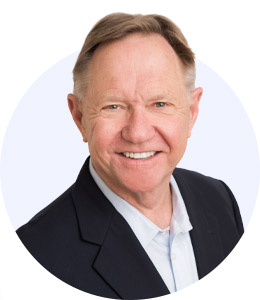“We need to have everyone on the same page.” This is a common message from the top. Another similar phrase is, “We need to have the team aligned.” It makes sense. The better an organization desires their performance to be, the more aligned the resources need to be. That starts with the most important resource: the people.
In presentations I often show overhead photos of the German and American four-man bobsled teams from the 2010 Winter Olympics. The USA earned the gold in a large upset. It was extremely close. What the photos show is that, for a very brief time, the second German bobsledder was not perfectly aligned with the other three on the team. Now, this is a world-class example. An organization does not usually need to be that aligned. Yet my experience is that individuals who desire excellence realize that tight alignment and consistent actions are needed.
A common item I have noticed—which is supported by John Kotter in his book A Sense of Urgency—is that top leaders believe there is tighter alignment than there actually is. This is especially true of the CEO. And if the top is not closely aligned the misalignment gets even worse as the information and action are cascaded throughout the system. Why is that? When a CEO communicates with their direct reports there is usually a lot of head-nodding. For the most part, if things are not explained in great detail, most leaders feel they are aligned. But are they?
I have been doing lots of work with senior executive teams. As part of the diagnosis for each team, I am looking for three basic items. My overarching aim is to determine whether the individuals have the same view of the external environment and how that environment is impacting the organization’s progress toward its goals. While I vary the wording of the three questions, the goal is always to figure out this perception.
Here is the first question: Over the next year, how difficult do you believe the external challenges are going to be? I give the respondents a five- or ten-point scale ranging from “extremely easy” to “exceedingly difficult.” When looking at the results, in a perfectly aligned team, everyone should choose the same number. In my experience, there is usually a wider gap than the top leader expected. There is no right or wrong answer in the numbers chosen; simply differences. For example, the leader who rates the challenges as a ten will have more urgency than the leader who rates them with a lower number, like a six. This leads to robust conversation.
The next question is geared toward current performance and entails processes and products. If the organization continues with current processes, will the results be better, the same, or worse? Again, I give the respondents a scale. This time a high number is better and a low number is worse. Based on recent experience the normal response is, “If we keep doing what we are doing, results over the next year will be the same or better.”
If a team feels that the external challenges will be greater, then the reality is that continuing with the current processes will result in worse results, not the same or better. In one case the CFO trended finances, adding in pay raises, insurance increases, and other items, and showed the team that if performance stayed as-is, results would get worse. It was a revelation.
The last question is individual. If your performance over the next year is the same as this year, what will your results be? Again, I use a five- or ten-point scale. Again, the results are usually a revelation. I have seen leaders who are missing goals answer that if they continue as they are their results will be the same or better.
The above process creates many wins. First, the senior team’s self-awareness is much better. This exercise creates the need for a better look at performance and challenges. It can also help organizations assess members of the team in a way that leads to deeper conversations. It can show why some areas are acting with more urgency than others. If a leader underestimates the external environment, they will not have the required urgency, nor will those they lead. This creates an unbalanced organization.
It also builds individual self-awareness. The survey is anonymous. As the results are shared, individuals can see how their rating (which of course they know) compares to others’ ratings (though they don’t know exactly who selected which rating). They then have to ask themselves why their perception is so different. And again, they come to see how this misalignment is often cascaded throughout the system.
Finally, this process leads to teams reexamining how they are communicating with others.
If you are interested in learning more, please write to me at Quint@quintstuder.com. As with all items, the questions and ratings are adapted to the organization. Yet most can benefit from taking a closer look at their alignment.
While it is only three questions, this process is a powerful one. It not only leads to getting the team on the same page, but it also leads to getting the team on the same sentence and the same word. Great alignment makes great performance more likely to happen.
Thank you.







